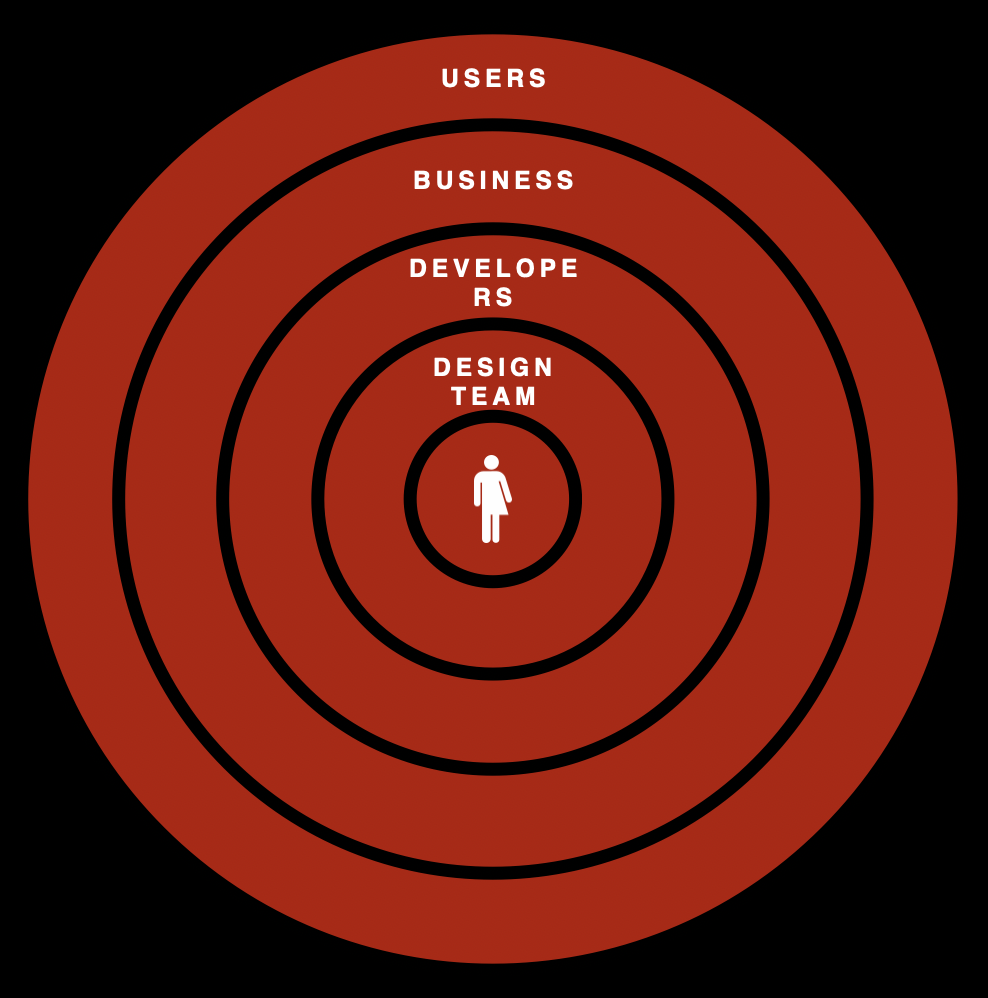In week 4 of the Spring term, Baseline Shift had the pleasure to host a talk by Achilles Gerokostopoulos – a graduate of the department who has lots of experience in software, tech and corporate communication. Currently working at the Irish National Lottery in Dublin, Achilles’ career involves working in design teams which is what he talked about in the session.
Working in a team is the alpha and omega of design at the moment
Achilles’ career path is a very interesting one. He graduated from The University of Reading’s Typography & Graphic Communication department in 2004 and found work in various aspects of design after that. At first he was very interested in editorial design; working for art directed magazines such as Esquire in Greece while also doing some design consulting for newspapers. In fact, one of the newspapers he worked on in Greece – Eleftheros Typos, was awarded Best Designed European Newspaper in 2007. After the Greek economy crashed Achilles decided to move to Amsterdam where he got into tech design. There, he worked as a design director in the gaming sector and a while after he began a freelance career in design consultancy which led him to Dublin. At the moment he has just begun working as a design lead for the Irish National Lottery.
Through these numerous jobs Achilles gained a lot of knowledge on how teamwork happens and what it is like to work in product development – ‘One of the likeliest industries you might be absorbed in’, he says. That is why he decided to tell our students a bit more about design in product development as well as the inner circles and relationships between design teams, developers, businesses and users.
With the rise of digital businesses, design is emerging again
From his experience, Achilles suggests that more and more businesses are going digital. During this process they realise the importance of design and how it will help them develop further in the digital sphere. He also mentioned that old companies have recently bought design companies to have them as in-house teams, the trend of working with or alongside designers when developing a business is on the rise. This results in an increase of designers being absorbed in the business industry early on in their professional careers and working with stakeholders, businesses, users and development commonly.
Achilles continued with a graphic (shown below) of the core stakeholders in product design. He stated that any product starts with users and their needs.
‘In product development a lot of your work will be finding out as much as you can about the users.’
Then there is the business – it is set up to address a particular user or consumer need, and usually sells that as a product or service.
And finally, development – they are the group of people that are called upon to implement and produce the business’s idea.
‘Design sits at the intersection of all these.’
Working in product development, Achilles says, there will be people whose needs you’ll be needing to address and you have to balance a lot of people’s wishes and needs.
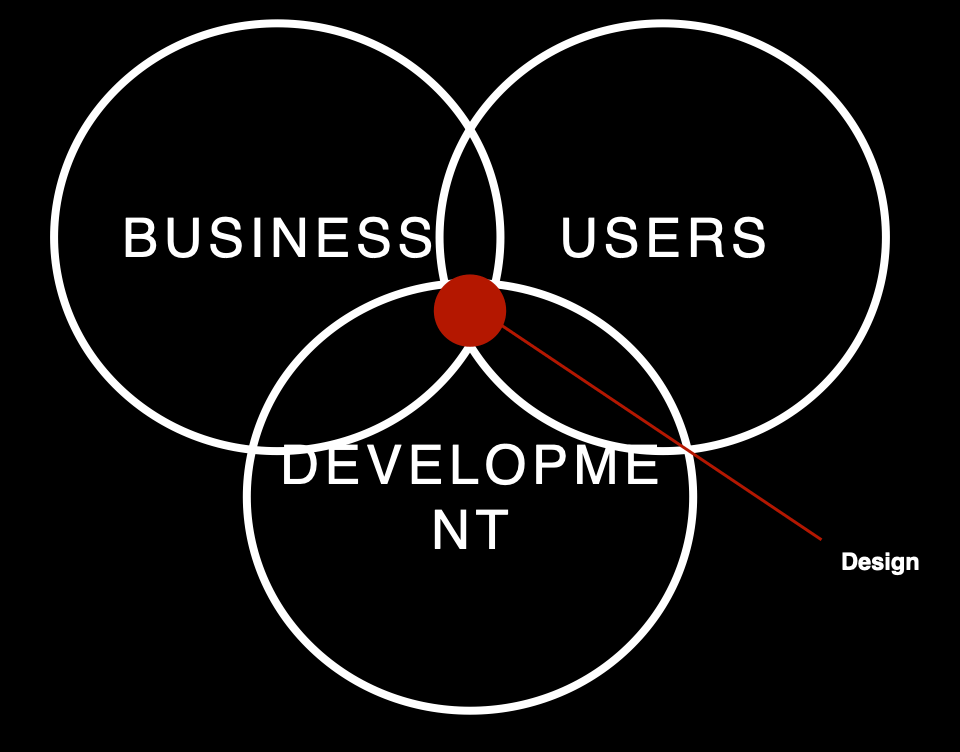
Design has two major sets of functions
Achilles explained how digital product development design can be seen to perform two major sets of functions.
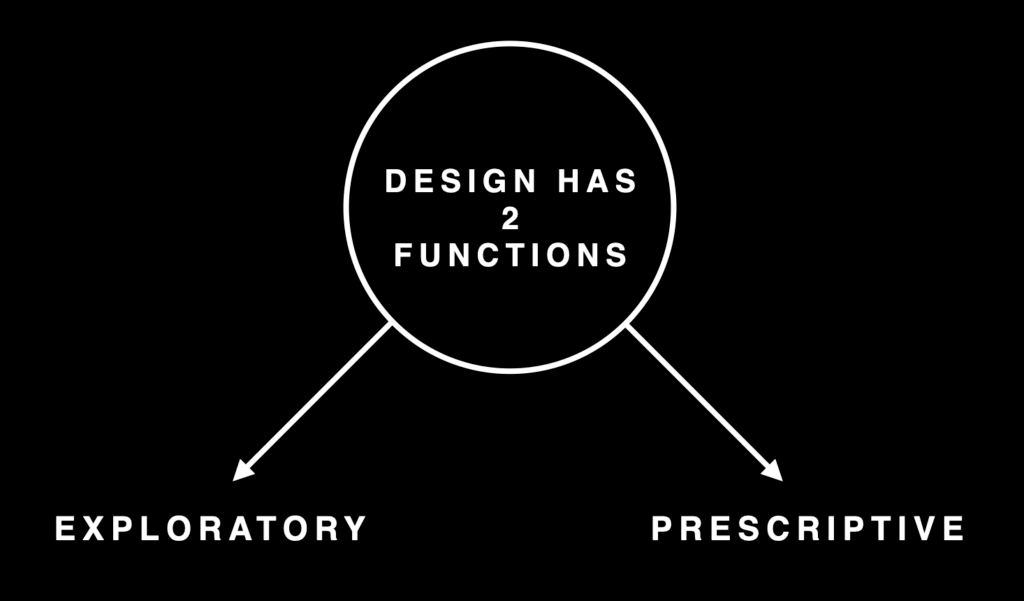
First are the exploratory functions which mainly deal with exploring and defining the problem space. Designers answer questions such as: What needs to be designed and why? Some common practices in the process feature creating workshops, conducting user research, collaborative ideation and process / journey mapping.
Second are the prescriptive functions which deal with translating the requirements into specifications and design assets that development can implement. This includes design specifications, graphic design, interaction design, and design system development.
Once you understand these functions, Achilles said, especially in larger companies, you get to the organisation of the design teams which perform these functions most effectively within the context of a company or organisation.
Two models
From his experience Achilles suggests that there are two broad models for design in product development.

The agency model: where the design resources are concentrated and function like an internal agency – centralised design organisation using waterfall development, and the embedded design model: where design resources are distributed across various product teams, using agile development. Of course, these are only two edges of a full spectrum of models since companies differ in their implementation of design teams and one can definitely recognise some that are in between but Achilles points these two main ones out.
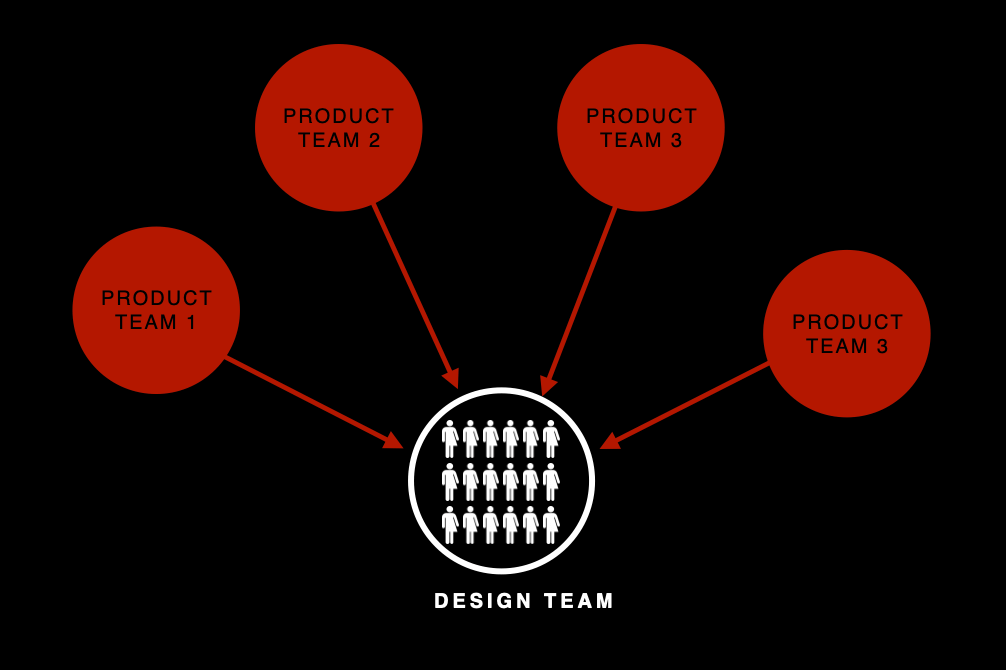
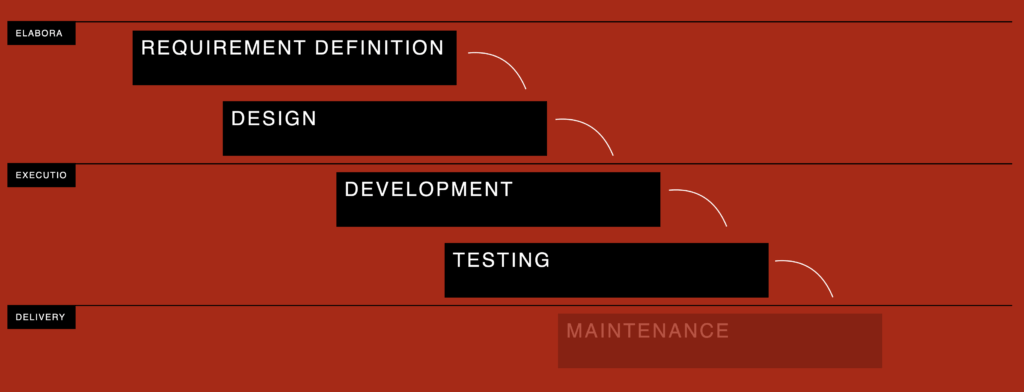
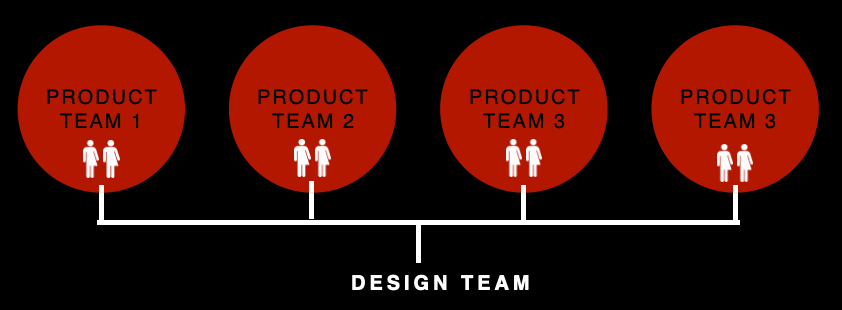

Achilles thinks that both models have their advantages and disadvantages, and largely depend on the structure of the company – the larger the company with a number of development teams, the more likely they’ll be using the embedded model.
Communication and coordination
After going over the different models, Achilles continued by describing the methods we can use to coordinate design efforts. He suggested that in either model, there will be several kinds of stakeholders and the designer is in the center. He showed a graphic where these are displayed in concentric circles by proximity of concerns to the Designer.
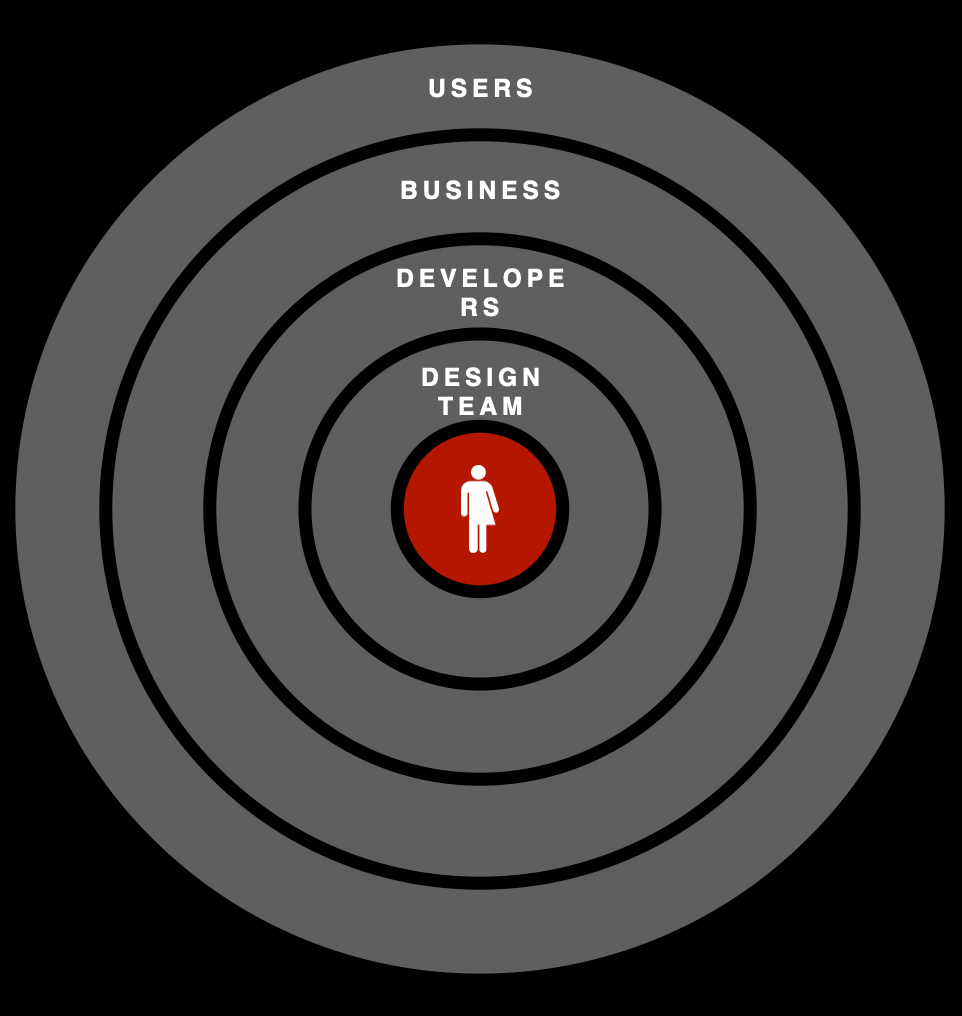
Design systems and common rituals
In order to communicate and coordinate with the stakeholders, Achilles recommended the use of design systems and common rituals.
Design systems consist of a common set of approaches to particular design problems, a common repository of design assets for use by all designers, a well maintained design documentation and a fully developed pattern library. Being a rather old concept, Achilles said that from his experience they have been an absolute necessity for most editorial design, especially newspapers. He also mentioned that recently there have been a lot of new tools emerging to help the development and use of digital design systems.
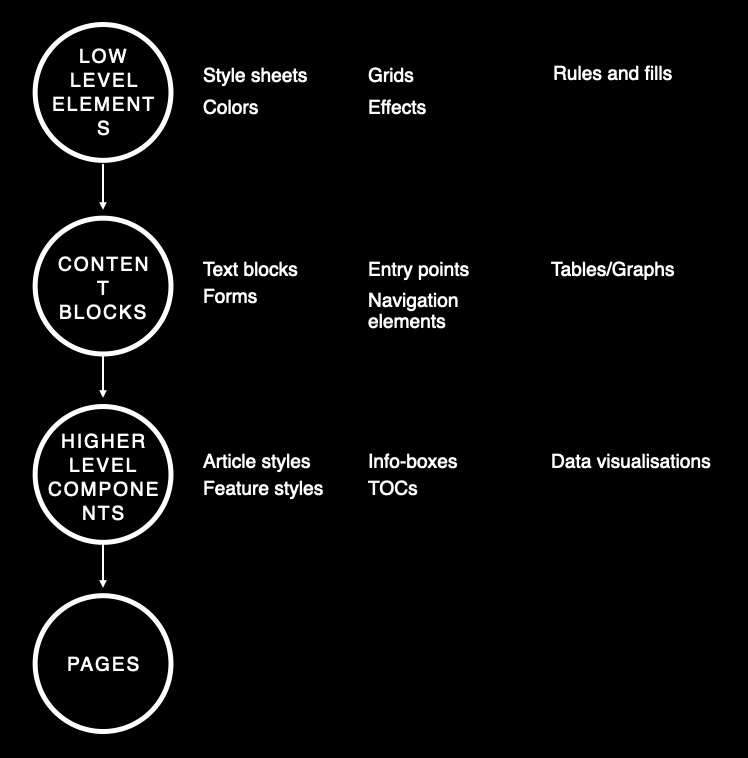
Common rituals, on the other hand, Achilles said, are one the easiest parts of the process, but also the one most commonly neglected. They, however, are very important in order to help the team and stakeholders with knowledge transfer, create a more cohesive team, promote spontaneous communication and avoid repeating the same mistakes.

What should you do?
To end his presentation Achilles decided to give some tips to our students if they ever find themselves being the new designer in a product development team. His three main insights were ASK, CODE, CHANGE.
First is to never be afraid to ask questions, Achilles said. As a young designer there will be a lot of things you don’t know, and you won’t come out of university fully formed. He suggests that your first job should be a learning experience.
Second, in a product design environment it is essential that you understand how technology works. Especially the closer you are to the visual design. You don’t need to become an expert but it helps to understand the underlying systems, but also some more abstract concepts. This will help with communicating with developers, but it will also greatly improve your design skills.
And third is to not be afraid of change. Life happens, things get thrown in your way and you’ll need to adapt. When things don’t work, and your circumstances aren’t conducive to your happiness, change your circumstances. It’s not easy, it’s not always fun, but it’s better than staying still.
Useful Links
Here is a document with some useful links Achilles suggested for students interested in this topic to look through: Links
Students’ thoughts
‘I really liked the general view of the sort of workflow for designers in the future, the small bits and pieces that you can only get from a designer who has been in the market for a while with a diverse background.’ – MA student
‘It was great to hear such professional insight on the real models of businesses concerning designers.’ – Part 1 student

